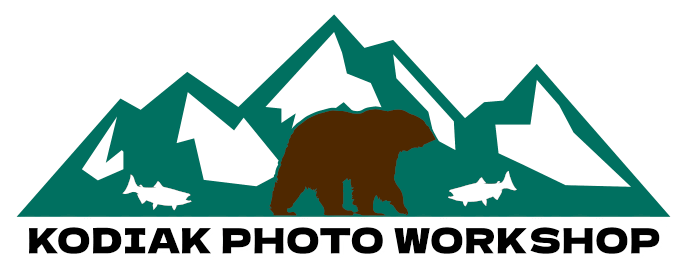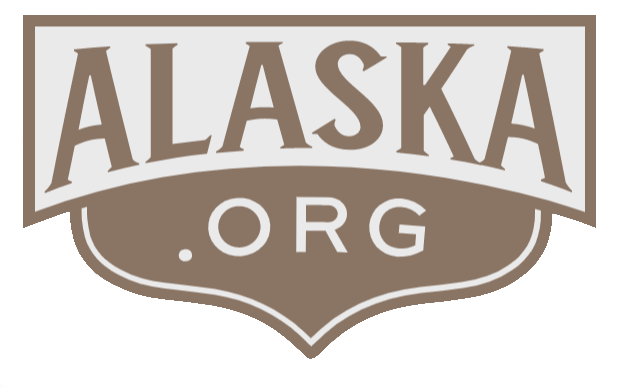Alaska offers a diverse range of experiences throughout the year, so the best time to visit depends on your preferences and interests. It’s important to note that weather conditions can vary across the vast state of Alaska, so it’s advisable to research specific regions you plan to visit.
Additionally, consider factors like accessibility, cost, and personal interests when deciding the best time for your visit.
Here are some considerations for visiting during different seasons in Alaska, with our handy infographic added for convenience.
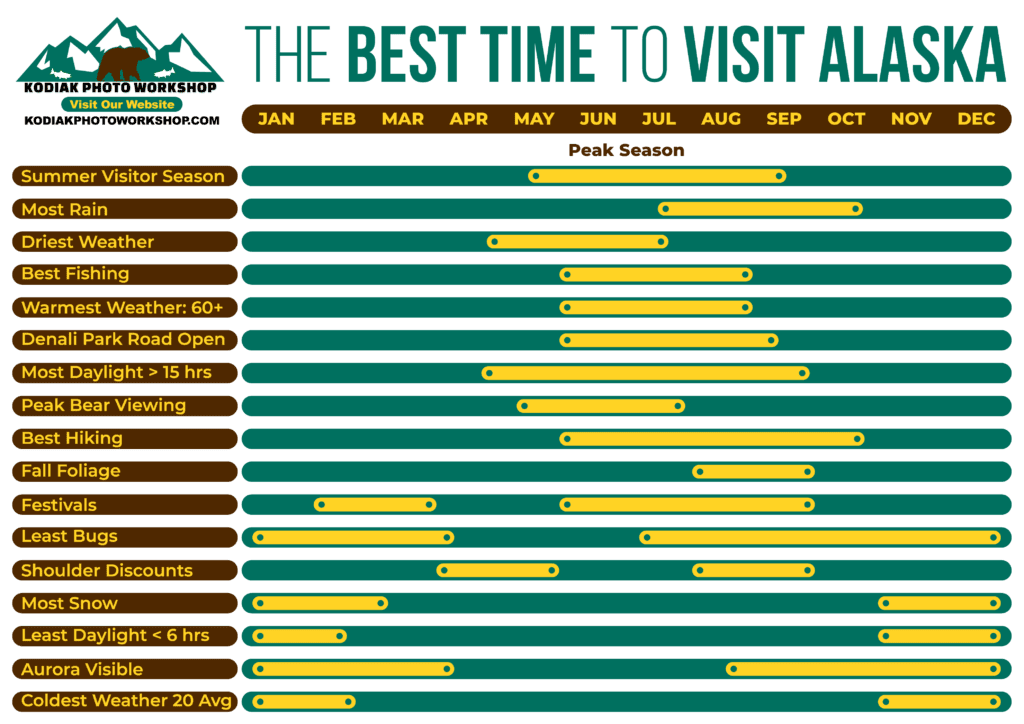
Summer (June to August)
- Weather: Summers in Alaska are relatively mild and pleasant, with temperatures ranging from 60°F to 80°F (15°C to 27°C) in most regions.
- Wildlife and Nature: This is the prime time for wildlife viewing, including bears, whales, and migratory birds. The landscape is vibrant, with wildflowers blooming and rivers flowing.
- Outdoor Activities: Summer provides opportunities for hiking, fishing, kayaking, wildlife cruises, and exploring national parks like Denali and Kenai Fjords.
- Tourist Crowds: Summer is the peak tourist season, so popular destinations can be crowded. It’s advisable to make reservations in advance.
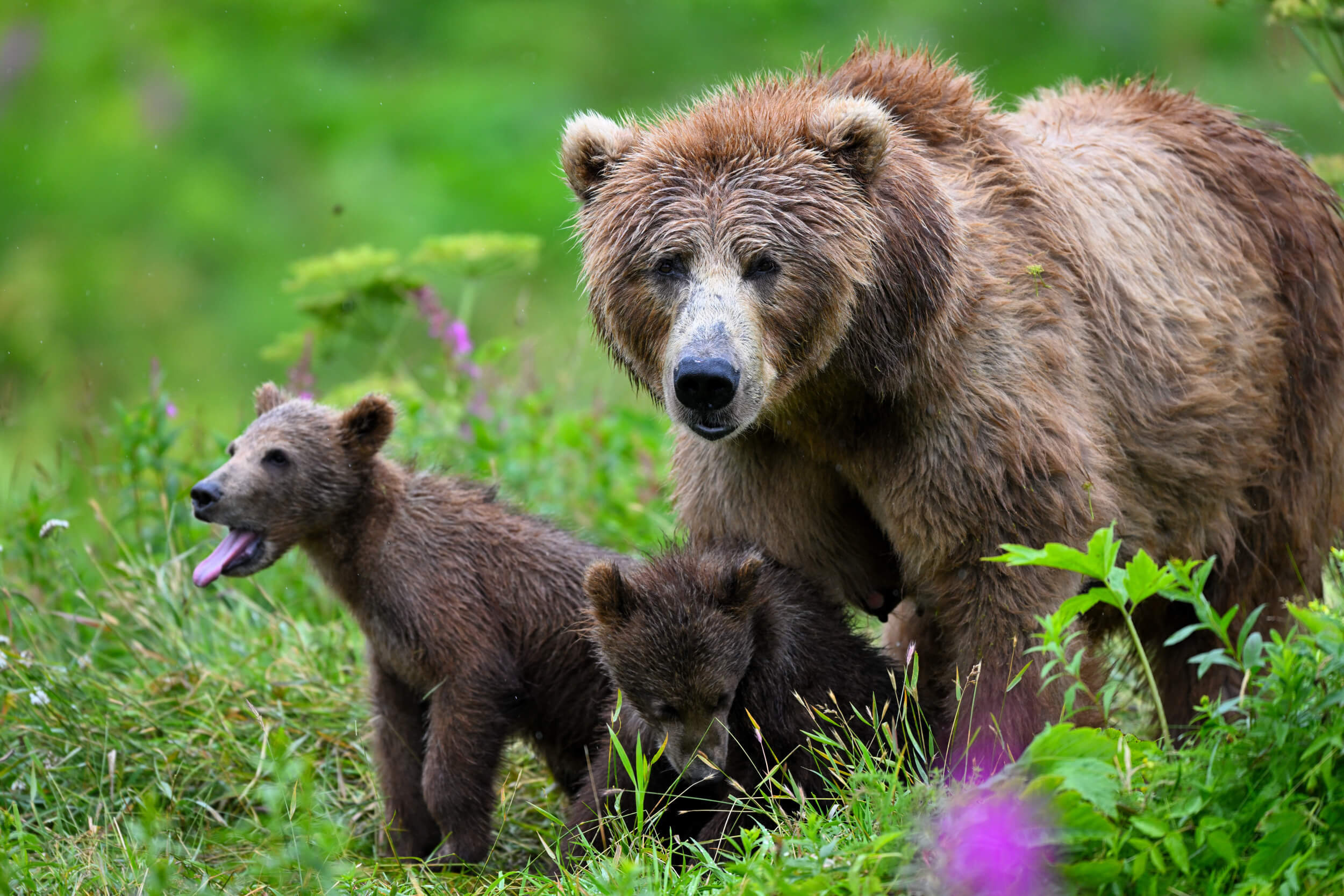
Fall (September to October)
- Fall Foliage: Alaska’s forests burst into stunning hues of red, orange, and gold during the autumn season.
- Wildlife and Northern Lights: September is a great time for wildlife viewing, as animals prepare for winter. Additionally, September and October offer a chance to see the Northern Lights (Aurora Borealis) in the clear night skies.
- Fewer Tourists: As summer ends, tourist numbers decline, allowing for a more tranquil experience. However, some attractions may start closing for the season.
- Denali National Park bus system closes down mid September.

Winter (November to March)
- Northern Lights: Winter is the prime time for witnessing the mesmerizing Northern Lights. Clear nights and long, dark hours increase your chances of seeing this natural phenomenon.
- Winter Sports: Alaska is a haven for winter sports enthusiasts, with opportunities for skiing, snowboarding, dog sledding, snowmobiling, and ice fishing.
- Iditarod Trail Sled Dog Race: In March, you can witness the famous Iditarod race, a thousand-mile sled dog race from Anchorage to Nome.
- Extreme Cold and Limited Daylight: Be prepared for extremely cold temperatures, with some regions experiencing polar nights (no daylight). Make sure to dress appropriately and plan your activities accordingly.
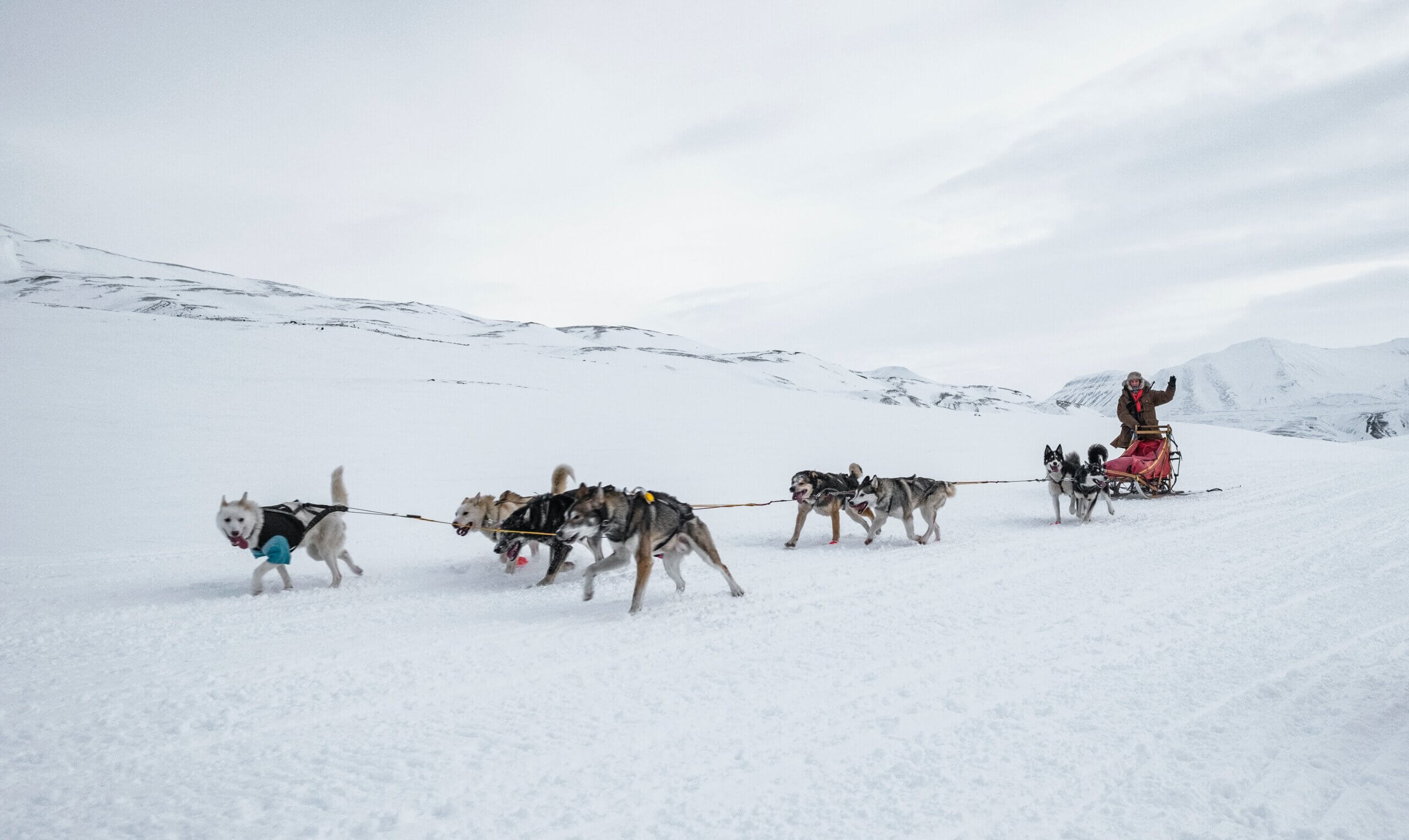
Spring (April to May)
- Wildlife and Bird Watching: Spring brings a resurgence of wildlife, with bears emerging from hibernation and birds returning for the nesting season.
- Longer Days: As spring progresses, daylight hours increase, allowing for more outdoor exploration.
- Thawing Scenery: Witness the dramatic transformation of Alaska’s landscape as snow and ice start melting, revealing gushing waterfalls and blooming flowers.
- Some epic hiking all over the state, such as in Hope, Alaska, with some breathtaking mountain lakes in the surrounding areas.
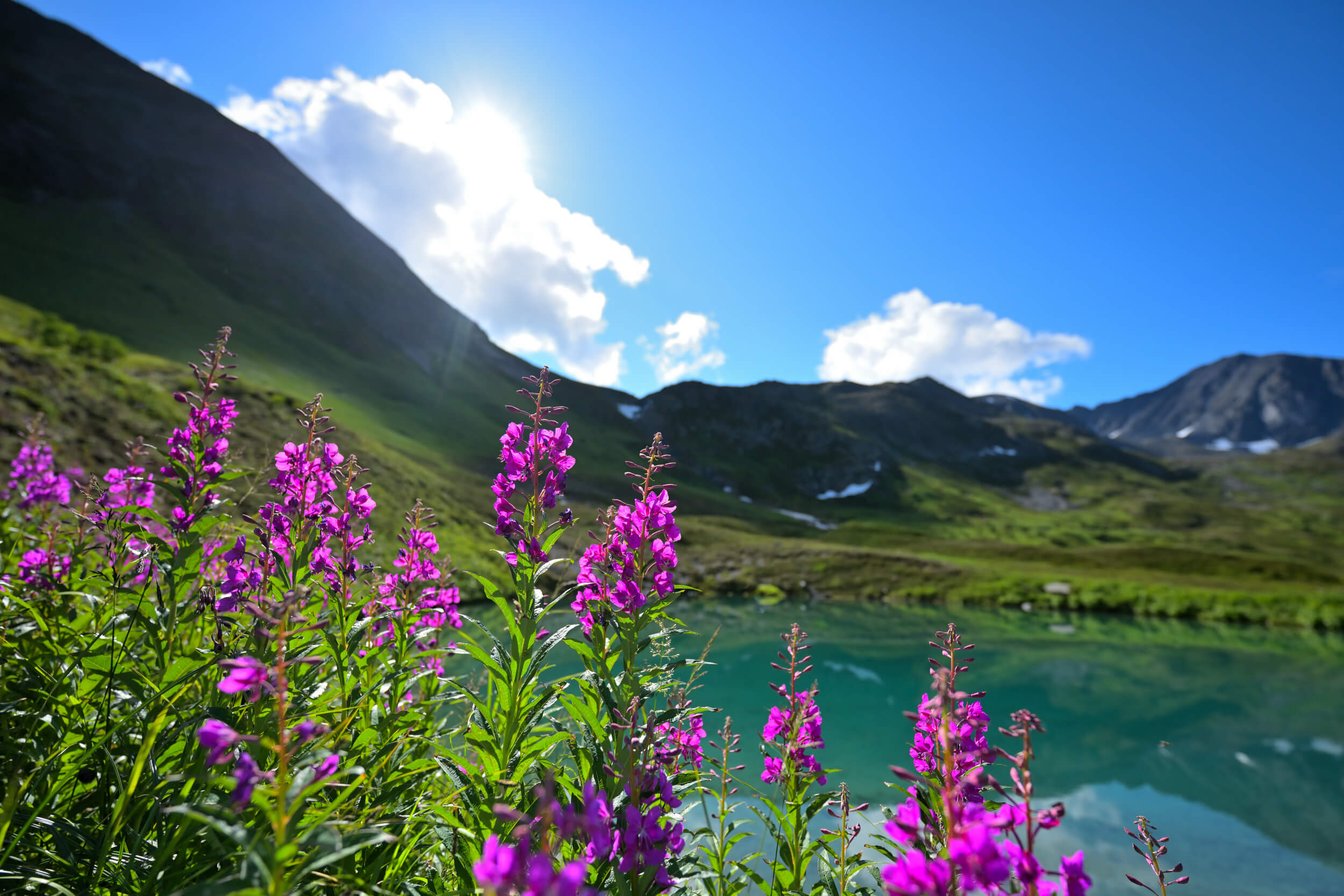
Considerations
The coastal areas, including Juneau and Ketchikan, tend to have milder temperatures than the interior regions like Fairbanks. Plan ahead and book accommodations and activities in advance, especially during the peak summer season.
Ultimately, the best time to visit Alaska depends on your interests, whether you prefer outdoor activities in the summer, winter sports, or experiencing the unique beauty of the Northern Lights.
The weather can be unpredictable in Alaska, so be prepared for changing conditions regardless of the season.
